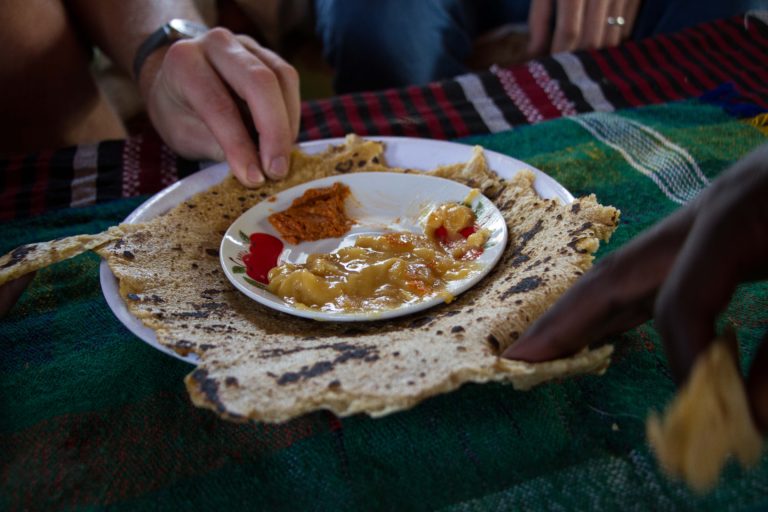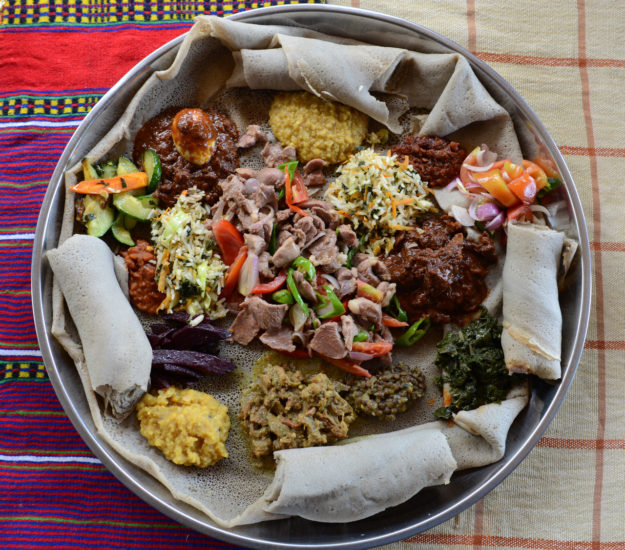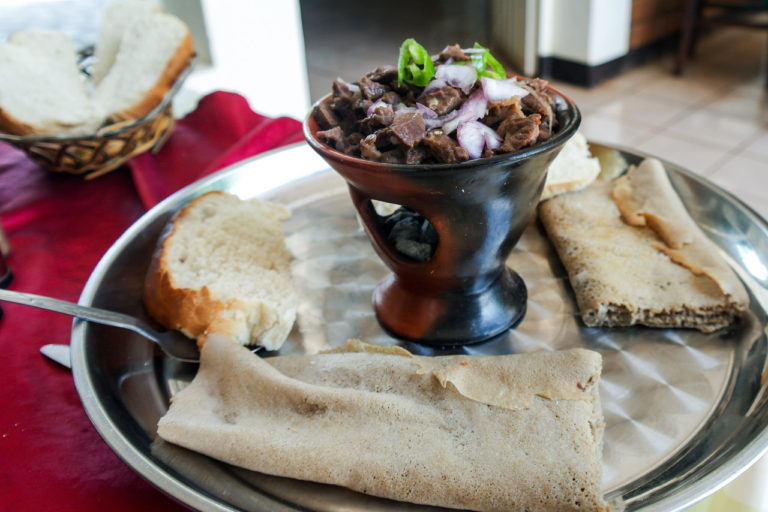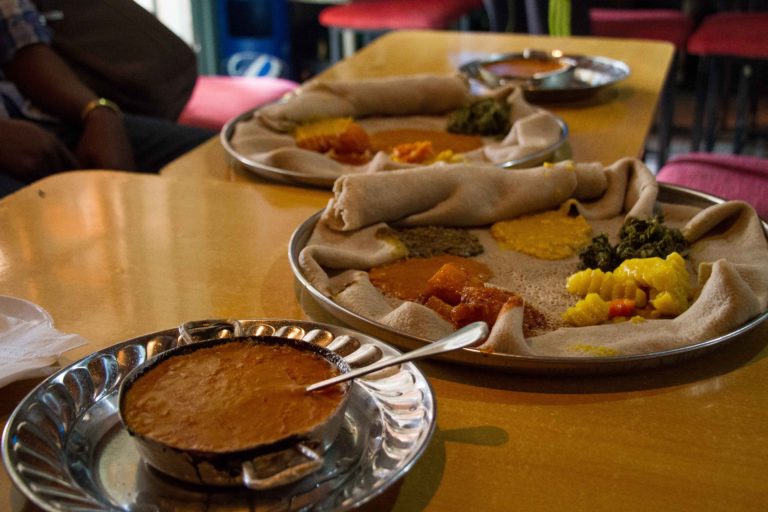A Guide To Ethiopian Cuisine

Posted on Sat 17 Apr 2021
Ethiopia is a country full of contrast and culture, known for their diverse, exquisite and unique cuisine, consisting of flavoursome stews and plenty of spices. More than 180 days of the year are fasting days, which means on Wednesdays, Fridays and Orthodox Lent, you aren’t allowed to consume meat, making Ethiopia the perfect place for vegetarians and vegans. If you’re booked onto one of our Ethiopian tours or are thinking of making a trip, read our guide to the cuisine, you’ll get to taste on your visit.

The Basics
When it comes to the basics of Ethiopian cuisine, all dishes usually consist of meat and vegetables, unless on a fasting day where the main ingredient will be vegetables. Flavoured with two main powdered spices and seasonings; the first being berbere, which is a blend of ground chilli pepper, ginger, garlic, nutmeg, cardamom, cloves, cumin and coriander, and the second being mitmita, a spice even hotter than the first, conventionally made from cardamom seeds, cloves, salt and chilli peppers.
Injera
The country’s national dish, injera, is a crepe-like flatbread that is made from fermented teff, a nutritious grain that contains almost no gluten. Injera tends to be served with the majority of meals, with its tangy and sour taste it works exceptionally well with wat, it’s common to find it replacing cutlery and is instead used to scoop up the flavoursome stews!
Wat
The most common main dish you’ll find in Ethiopia is wat, a rich stew, which can consist of any type of meat or vegetable your heart desires! All variations are vibrantly coloured, flavoursome and consist of onions and berbere as a base. The most common dish would be the doro wat, also known as chicken stew, consisting of onions, spices and chicken, slow cooked for hours to allow the blend of flavours to combine, the dish takes a while to make and is often hard to find in Ethiopian restaurants but our specialised guide will be able to point you in the right direction if it is something you wish to try!

Siga wat is another traditionally spicy stew, consisting of beef and based from simmered red onions, served with a boiled egg on top. Shiro wat is a vegan option, with the main ingredient being powdered chickpeas, combined with onions, garlic, ground ginger, chopped tomatoes and chilis.
Kitfo & Tere Sega
Both of these dishes have one thing in common, they both contain raw meat. Kitfo is a dish consisting of raw minced meat, cooked with a mix of spices and topped with niter kibbeh, a spiced butter, then usually served with a side of injera, allowing you to enjoy every last bit. Whereas tere sega is presented as long strips or cubes of raw meat, it is also served with injera, where usually you would wrap the meat and simply dip into an accompanying side.

Tibs
Tibs is an Ethiopian delicacy containing saute’ed meat or vegetables and has many similarities to fajitas. Cubes of meat are stir-fried with a mix of vegetables in niter kibbeh, a traditional butter. There are many versions of tibs; they can either be hot or mild, include a variety of vegetables or none and include any meat, although the most common meats are goat, chicken, beef and lamb. One of the most popular versions of tibs is zilzil tibs, a dish of braised beef paired with peppers and simmered in herbs and spices. Tibs is one of the most popular choices, and one you will see in most restaurants or markets, the main base of the dish includes one type of meat, spices, onions, peppers and butter.
Fit-fit or fir-fir
Typically served as a traditional breakfast, fit-fit or fir-fir consists of shredded injera, niter kibbeh (the traditional butter) and berbere, giving you a kick-start to the day!
Dulet
This dish contains a combination of beef, liver and lamb tripe; it is combined with onions, jalapeños, garlic, mitmita and niter kibbeh. Like most dishes in Ethiopia, dulet is served on the infamous injera.

Yetsome Beyaynetu
Yetsoe beyaynetu is a mixed vegan platter that consists of a variety of curries, vegetables and lentils served on a plate of injera. It can have as many or as little options as you like, shio tends to be a firm favourite, which is a chickpea powder-based dish cooked with onions, garlic and berbere.
Have you sampled any of these dishes before? If so, what’s your favourite or are they any we haven’t mentioned? There are so many things to discover in Ethiopia, from the Simiens Mountains, Addis Markets, Dorze Tribe Village as well as the incredibly diverse and tasty cuisine! We offer a unique experience that is somewhat different from what other travel companies offer, our itineraries have been put together by our travel experts who are incredibly knowledgeable in each area. If you’d like to know more about one of our experiences or have any questions, don’t hesitate to get in touch with one of our team!
Read more from our blog here
